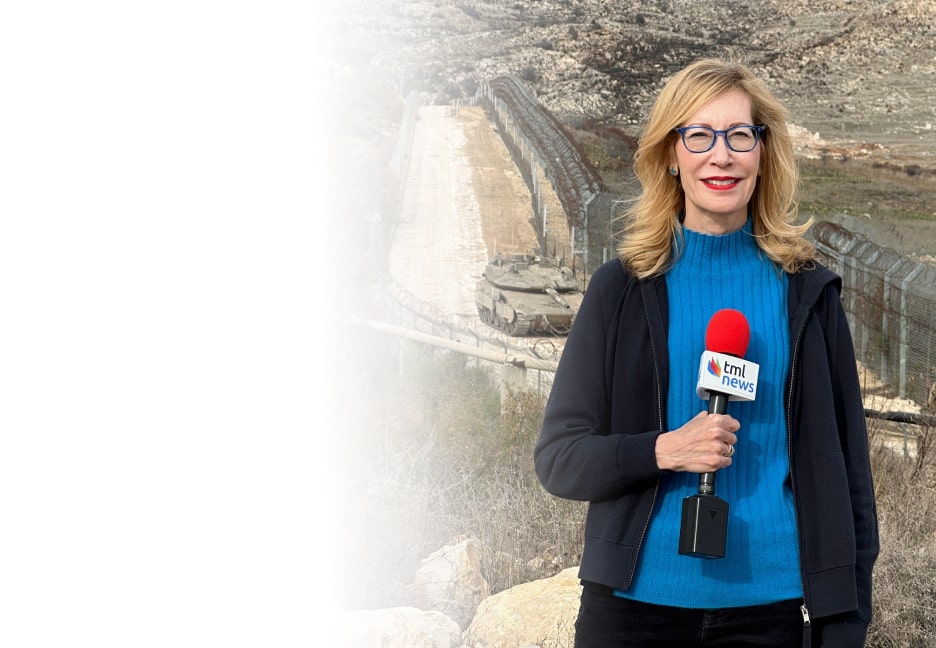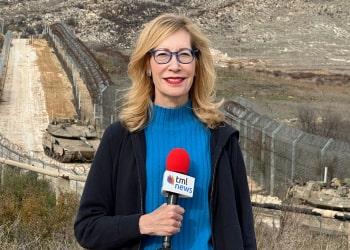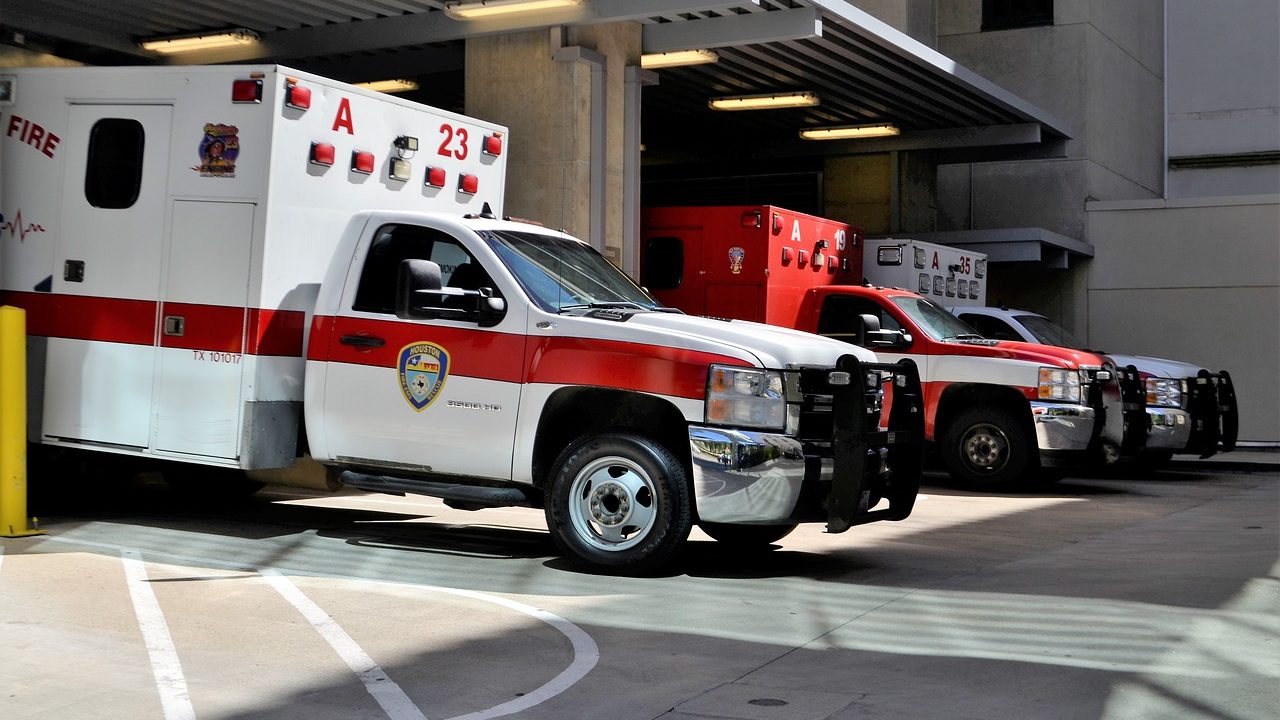US-Israel Collaboration to Make Skies, Ground Safer for First Responders
Tech advancements provide extra eyes when emergency services are operating in dangerous conditions
One nation is a sprawling world power of 330 million people, divided into innumerable federal, state and municipal jurisdictions, almost all with their own police forces, fire departments and ambulance services. The other nation is a sliver of land populated by nine million people, where all emergency calls are handled through three telephone numbers.
The United States and Israel, though, are combining their technologies to ensure that first responders, under increasing assault in America, are better prepared to handle whatever comes their way.
The Israel-US Binational Industrial Research and Development (BIRD) Homeland Security program is a joint initiative funded by the US Department of Homeland Security’s Science and Technology Directorate and the Israel Ministry of Public Security. Its goal is to foster strategic partnerships between companies in both countries for joint product development.
BIRD recently handed out $1.5 million in grant funding for a pair of collaborative projects, including a partnership between CentralSquare Technologies of Lake Mary, Florida and Carbyne of Tel Aviv to develop real-time, multi-media emergency call communications for public safety and first responders.
“Our solution is something that we’ve developed throughout the last six years, which is currently serving hundreds of agencies and governments around the world and more than 400 million people that are under our coverage, with the capabilities that we’re bringing to the table,” Carbyne CEO Amir Elichai told The Media Line.
Carbyne’s product converts a voice call to an emergency dispatch center into multiple streams of data that allow for a clearer picture of what is happening on the ground. It also lets callers use their phones to send live video, and the caller’s location becomes a viewable map, so that a dispatcher can get an overview of the surrounding area. The partnership with CentralSquare is intended to send that information directly to the first responders, so they can view as much of the information as possible on their mobile devices before entering dangerous situations.
“Being on the contact center side, basically there is a missing component, which is what CentralSquare is bringing to the table. And that’s the dispatch element. So, we are basically aggregating the data from the emergency call and analyzing what’s going on, and this information is being fully integrated and shared with the dispatch platform and then delivered to the first responders, and basically the forces that are going to solve the event,” Elichai said.
“By working with CentralSquare, we will have the ability to push for the first-time information from the citizens to the call centers to the dispatch and to the responder. So, when I’m driving to an event or driving to a big fire, I will have an ability to see what’s going on pre-arrival to the event. We’re talking about responder safety and transparency and data collaboration. This is exactly what this partnership should achieve,” he said.
This holiday season, give to:
Truth and understanding
The Media Line's intrepid correspondents are in Israel, Gaza, Lebanon, Syria and Pakistan providing first-person reporting.
They all said they cover it.
We see it.
We report with just one agenda: the truth.


For the first time, we will be able to provide first responders with the ability to see data in their mobile device and have real-time data coming from the citizens. So, the key element will be increased responder safety.
Carbyne and CentralSquare had been collaborating for roughly 10 months prior to receiving the BIRD grant. Elichai said both companies were already well-financed, and the grant should cover around a month of research and development. For him, it was more about a nod to the impact that the partnership could have on public safety.
“It’s a recognition of something new coming to the market, approved by the Department of Science of Homeland Security of the US government and the same in Israel, so it’s basically credibility that we are building, meeting the standards of the US and Israeli governments,” said Elichai.
“For the first time, we will be able to provide first responders with the ability to see data in their mobile device and have real-time data coming from the citizens. So, the key element will be increased responder safety. In the United States, every week you’re hearing about police officers being shot or violence that is increasing against first responders, and by having these tools in their hands, they can conduct a kind of a pre-arrival assessment. We believe that we will see a better outcome on responder safety. And this is basically what we’re trying to deliver here,” he said.
The other BIRD Foundation grant was awarded to Sagetech Avionics of White Salmon, Washington and Ciconia of Ness Ziona, Israel, to further development a collision avoidance system that allows first responders to operate aerial vehicles alongside manned aircraft. The plan is for the combination of hardware and software resulting from the collaboration to allow drones and manned planes to “talk” to each other and issue a warning if the possibility of a mid-air crash is detected. The technology is geared toward aiding fire departments that are using helicopters and drones in low-visibility conditions.
But, with the expected heavy future use of drones for delivery and other business and service purposes, the technology promises an added impact.
Ciconia has developed an algorithm that calculates the location of a linked drone and helicopter and sends an alert to each if they are getting too close to each other. Ciconia hopes to integrate its algorithm into the transponder hardware that Sagetech has developed, providing more complete situational awareness for operators. The trick for Sagetech was to take a traditional transponder and shrink it down so that it can be used by drones.
“The size of it is like a deck of cards, and that’s still not easy on a drone,” Doug Coates, Ciconia’s director of US operations, told The Media Line.
Coates notes that ACAS, the Airborne Collision Avoidance System that is a fixture on passenger planes, is accepted by the US Federal Aviation Administration (FAA), “but you can’t make it work for small aircraft and drones. It is a heavy solution that takes lots of computing power and battery power. Really small aircraft can’t do it.”
Coates said that Ciconia and Sagetech had been tripping over each other trying to find a way to cooperate.
“It’s a two-year program. We think we can do it in a year. We went flight-testing with the IDF, but there’s a big difference between the military flying it and the FAA integrating it,” said Coates.
Like the other BIRD Foundation grants awarded this year, the Ciconia/Sagetech collaboration becomes complicated due to the decentralized nature of first-responder structure in the US, as compared with Israel. When dealing with large fires that may require the assistance of crews from different cities, or even states, all participating aircraft would require installation of the algorithm software, along with the accompanying hardware, for the system to be more effective.
“It’s simpler to say than it is to do. But this technology has tremendous potential. And when you’re talking about the massive influx of drones that we expect to see in the skies, the impact could end up being much broader than we initially set out for,” Coates said.

